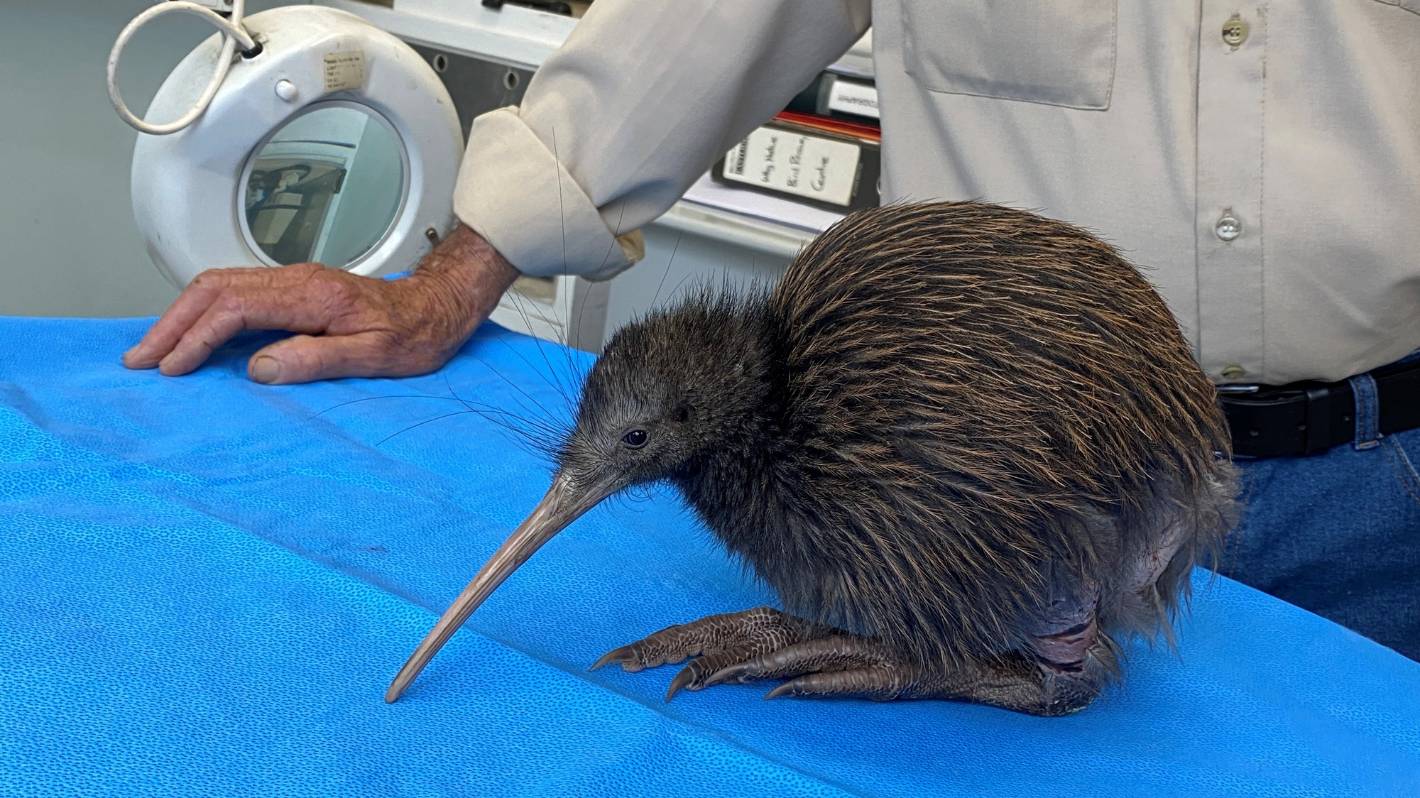- A young kiwi nearly died after being hurt in a possum leghold trap.
- The traps must be checked daily and should be set off the ground to avoid kiwi.
- A conservationist is calling for stronger rules to ensure traps are correctly used.
A Northland conservationist is calling for stronger rules around the use of possum leghold traps after a young kiwi nearly died in one.
The male North Island brown kiwi was found injured in Waimate North last Thursday and rushed to a vet before being taken to the Whangārei Native Bird Recovery Centre.
Centre founder Robert Webb said the bird could have easily died from the injuries, which caused an infection and left him severely dehydrated.
Denise Piper/Stuff
The kiwi caught in the leghold possum trap in the Bay of Islands last week was initially touch-and-go, says Robert Webb from the Whangārei Native Bird Recovery Centre.
The kiwi, which is just over a year old, also lost a large amount of feathers, which shows he thrashed around in the trap, Webb said.
READ MORE:
* Kiwi severely injured in possum trap returns to wild in against the odds recovery
* Two kiwi die after being snared in pest traps in Coromandel, DOC issues warning
He believed the kiwi was left in the trap for a day-and-a-half or possibly two days – contrary to the Animal Welfare Act, which requires traps to be checked daily.
Denise Piper/Stuff
The kiwi suffered a wound on his leg, which became infected, and lost most of his rear feathers.
“Any longer and we wouldn’t have been able to stop the infection. It would’ve been just terrible,” Webb said.
The kiwi is being treated with fluids and antibiotics, and started eating by himself on Monday night.
Webb expected the kiwi to make a full recovery and be released back into the wild.
MPI
The Ministry for Primary Industries has restricted which leghold traps can be used, with rules about sizes and types.
But not all injured kiwi are so lucky. One permanent resident of the centre, Sparky, lost his leg in a gin trap 19 years ago.
Steel-teeth gin traps have since been replaced by soft-jaw or padded leghold traps, but Webb said education in their proper use was still needed.
The traps should be at least 70cm off the ground and can easily be attached to a branch or tree trunk, he said.
Denise Piper/Stuff
Sparky the kiwi lost his leg in a gin trap 19 years ago and is now a permanent patient, and resident educator, at Whangārei Native Bird Recovery Centre.
“If you set a trap on the ground, the natural thing is for kiwi to be inquisitive and see what’s in the trap. If he stands on it, bingo.
“The other thing that can happen is a kiwi will put his bill in it, the trap goes off and the kiwi will die.”
Conservationist Brad Windust, from Bay Bush Action, believes leghold traps are too easily available.
The traps are favoured by those wanting possum fur, as a freshly killed possum is easier to pluck, Windust said.
Denise Piper/Stuff
The young kiwi, enjoying a brushing from Robert Webb, is set to make a full recovery and will be released near where it was found.
But “cowboys” were using the traps and not following the rules, creating a black mark on the possum fur industry, he said.
Windust would like to see the traps be branded and registered to the buyer, so they can be prosecuted if an incorrectly set trap is found.
The Department of Conservation is still investigating how the kiwi came to be injured, senior ranger Adrian Walker said.
To kiwi-proof the traps, DOC urges people to secure them to a wooden board about 1m long, and to secure one end of the board to a tree or post at least 70cm from the ground.
If this is not practical, DOC encourages people to use live-capture cage traps.
Leghold trap restrictions
- Only small sizes may be bought and used.
- Must not be used within 150m of any dwelling without express permission of the occupier, or in any area where there is a probable risk of catching a companion animal.
- Must be inspected within 12 hours after sunrise on each day the trap remains set.
- Any live animal must be removed and cared for appropriately, or killed immediately.
- Capture of non-target animals to be minimised.




